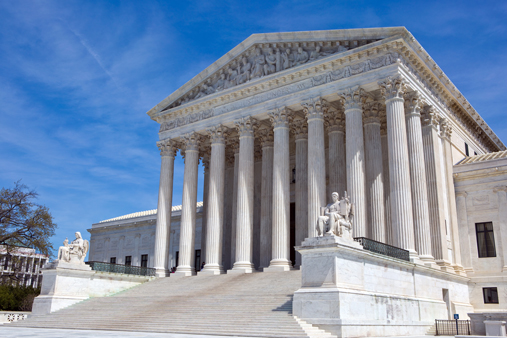On Oct. 6, 2014 the U.S. Supreme Court denied an industry group’s petition challenging the Environmental Protection Agency’s (EPA) 2008 decision to lower the 8-hour ozone national ambient air quality standards (NAAQS) from 80 parts per billion (ppb) to 75 ppb. With that legal battle put to rest, the next month, on Nov. 25, EPA announced it is accepting comments on a new proposal to lower the ozone NAAQS even further to between 65 ppb and 70 ppb. EPA is also accepting comments on either retaining the current standard or setting an even lower standard of 60 ppb, which was suggested by the Clean Air Scientific Advisory Committee, an entity that provides EPA with scientific assessments for the NAAQS. The proposal was published in the Federal Register on Dec. 17, and comments are due by March 17, 2015.
While EPA does not consider costs in setting the appropriate level for the NAAQS, its regulatory impact analysis of the proposed rule estimates the costs of a 70 ppb standard to be $3.9 billion, the costs of a 65 ppb standard to be $15 billion, and the costs of a 60 ppb standard to be $39 billion. These costs would be the result of many counties being in “nonattainment” with the ozone standard and needing to implement policies to reduce emissions. Further, many businesses that would require new or modified air permits in order to expand their current operations or build new facilities could face increased costs and regulatory hurdles as a result of the new nonattainment designations. In particular, ozone precursors are emitted in the combustion of fossil fuels, so the rule could potentially impact everything from large facilities with boilers to smaller facilities that have a single engine. Methane is also an ozone precursor, so the U.S.’s booming oil and gas production industry or landfill gas methane projects could also be affected if the rule is finalized. Businesses that are already located in nonattainment areas may be particularly affected, since the designations could potentially shift from “marginal” or “moderate” to “serious” or “extreme,” resulting in stricter requirements to regain attainment status.
Currently all or portions of more than 200 counties across the country are in nonattainment with EPA’s 75 ppb standard, and those areas include more than one-third of the total U.S. population. EPA has evaluated which counties with air monitoring equipment in place would violate this new proposal, and it projects that 358 counties would violate a 70 ppb standard, and 558 counties would violate a 65 ppb standard.
There are two ozone NAAQS addressed in the proposed rule: a primary NAAQS, meant to protect “public health,” and a secondary NAAQS, meant to protect “public welfare,” and the NAAQS must be set with an “adequate margin of safety.” EPA’s proposed standard of between 65 ppb and 70 ppb would apply to both the primary and secondary standards. Previously, in setting the 2008 NAAQS, EPA determined that the primary and secondary NAAQS should both be set at 75 ppb. But on review, the D.C. Circuit remanded EPA’s secondary standard and held that EPA had failed to identify a level of air quality requisite to protect public welfare. EPA has attempted to address that problem in this new rulemaking by developing an extensive analysis of the biological and ecological effects of ozone to support its proposed secondary standard.
For sources that emit precursor pollutants to ozone, one of the most important aspects of the rule may be a procedural issue: how should EPA treat new source review permit applications that are being considered during implementation of a final standard? This will be an important issue for many businesses which are considering expanding their current operations or building new emission units in the coming years. EPA is accepting comments on whether to add a provision to its regulations that would grandfather certain new source review permit applications that are pending on the effective date of the revised ozone NAAQS, which would allow those applications to be evaluated under the current 75 ppb standard.
Another critical issue to consider is the timeline for the rulemaking and potential implementation. EPA issued the proposed ozone standard under a court-ordered deadline, and under that same order EPA is required to finalize the standard no later than Oct. 1, 2015. That will start a two-year process for EPA to designate which areas of the country are in attainment with the standard. Under that process, states would have 12 months, potentially until Oct. 1, 2016, to submit their initial designation recommendations, based on 2013-2015 air quality data. If EPA intends to modify the state recommendations, it must notify the appropriate state Governor no later than 120 days prior to making its final designation decisions, which under the Agency’s current timeline would be in Oct. 2017.
For more information, contact the Barnes & Thornburg environmental attorney with whom you work, or one of the following attorneys in the firm’s Environmental Law Department: Tony Sullivan at tony.sullivan@btlaw.com or 317-231-7472; Charles Denton at charles.denton@btlaw.com or 616-742-3974; Michael Elam at michael.elam@btlaw.com or 312-214-5630; Tim Haley at timothy.haley@btlaw.com or 317-231-6493; Joel Bowers at joel.bowers@btlaw.com or 574-237-1287; or Cheryl Gonzales at cheryl.gonzalez@btlaw.com or (317) 231-7557.
Visit us online at http://www.btlaw.com/environmental.
© 2014 Barnes & Thornburg LLP. All Rights Reserved. This page, and all information on it, is proprietary and the property of Barnes & Thornburg LLP. It may not be reproduced, in any form, without the express written consent of Barnes & Thornburg LLP.
This Barnes & Thornburg LLP publication should not be construed as legal advice or legal opinion on any specific facts or circumstances. The contents are intended for general informational purposes only, and you are urged to consult your own lawyer on any specific legal questions you may have concerning your situation.












/Passle/6488d4630e7e25c9ac9f834a/MediaLibrary/Images/2024-07-18-19-15-33-047-669969d52008239f764a11af.png)


/Passle/6488d4630e7e25c9ac9f834a/SearchServiceImages/2024-07-17-15-17-44-967-6697e0980752df56d2441ada.jpg)
